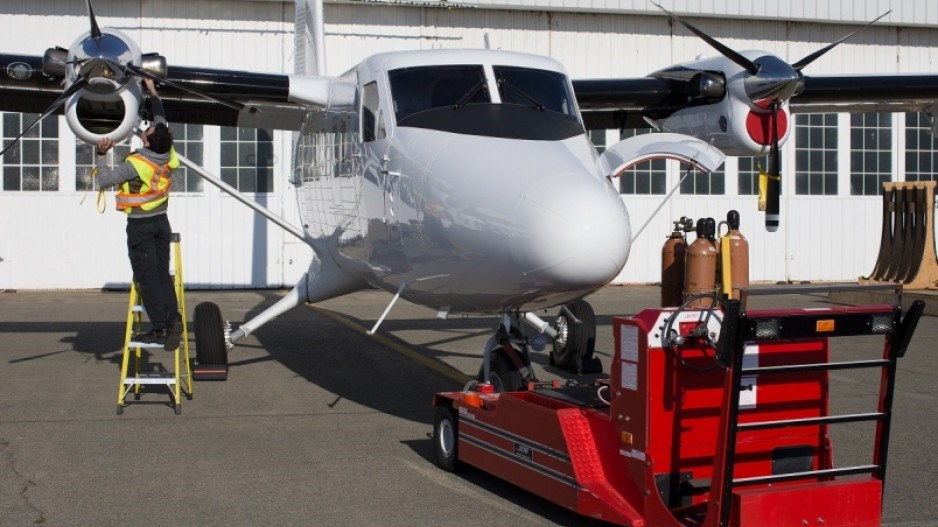Viking Air employees are on the job again after a three-month layoff that saw the company sell several new Twin Otters and move forward on future deals.
“There are a number of deals that are coming through that gave us enough confidence to restart the production line, so it’s fantastic,” Viking president Dave Curtis said Wednesday from Ottawa where he was attending the Canadian Aerospace Summit.
Viking is also diversifying by lining up 11 orders to convert CL-215 water bombers into a configuration similar to a newer version of the firefighting plane called the CL-415, or SuperScooper.
It is about six months away from a decision on whether to start building new CL-415 aircraft, Curtis said. The plane was built by Bombardier until 2015 and 170 are still in service today.
Orders for more than 20 such aircraft are necessary to start production, Curtis said. He noted that French President Emanuel Macron has expressed interest in the CL-415 and talked about the need for 20 of them in the European Union.
In Europe, the CL-415 is recognized as the primary firefighting airplane, Curtis said.
Different types of aircraft have their own roles to play in fighting fires, Curtis said. Planes are typically used to dump retardant on the edges of fires.
If Viking brings the CL-415 back into production, work would be divided in a similar fashion to what is happening with Twin Otters, he said. Large components would be manufactured at its North Saanich headquarters on Victoria International Airport lands. Final assembly would be in the Calgary plant, and planes would likely return to Victoria for finishing and delivery, Curtis said.
A total of 900 jobs would be created if the CL-415 goes into production, Curtis said.
Interest in water bombers comes as climate change sweeps the planet. Severe wildfires broke out this past summer in B.C., with 54 per cent attributed to people, and the rest to lightning, according to the B.C. Wildfire Service.
Viking has been building the updated Twin Otter for a decade. So far, it has sold 130 of the planes around the globe. Each has a base price of about $7 million.
During the 90-day pause in production, which resumed Nov. 1, the company sold eight planes. Recent purchases sent planes to Fiji, Alaska and the Middle East, said Curtis.
The majority of the 212 employees affected by the layoff have returned to work on Twin Otters. It will take about 60 days to get the production line fully ready again. “We certainly were not prepared to bring people back if we thought we were only going to have to lay them off again,” said Curtis.
Alterations must be completed at the North Saanich building to fit in the conversion work on the CL-215, Curtis said. He noted that a team in the United Kingdom is preparing to transfer needed tools here, used in converting the firefighting aircraft.
The 11 conversion projects alone represent two to three years worth of work, Curtis said.
Thousands of B.C. residents were displaced by wildfires this year. B.C.’s largest single fire, in the Cariboo and Chilcotin, eventually covered 432,000 hectares. Deadly wildfires also broke out this year in California, Portugal and Spain. The B.C. Wildfire Service said so far this fiscal year (April 2017 to March 2018), there have been 1,354 fires, burning 1.2 million hectares.
The province contracts out for the bulk of the firefighting aircraft it uses, with Conair Aerial Firefighting of Abbotsford winning most of the recent contracts.
Coulson Air of Port Alberni is aiming to compete for that business by converting six Boeing passenger aircraft into “Fireliner” air tankers capable of holding 4,000 gallons each. Coulson owns two Martin Mars water bombers, dating from the 1930s. One was damaged and not available until later in the summer.




